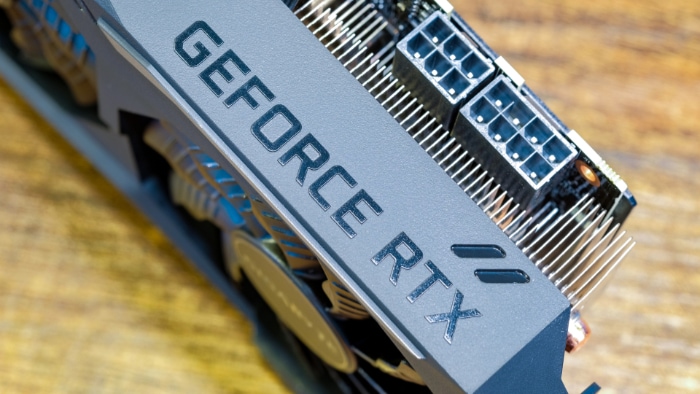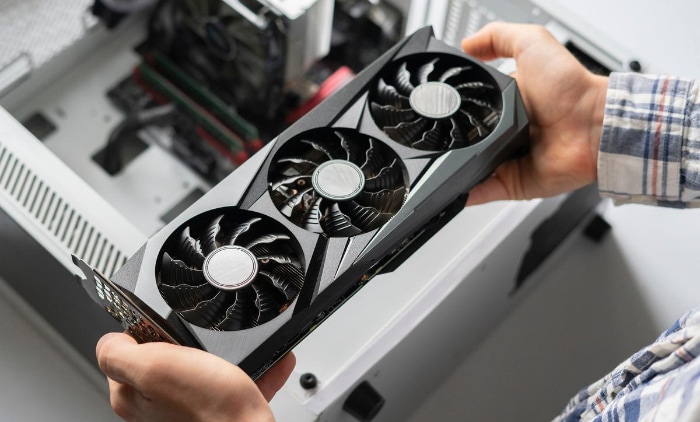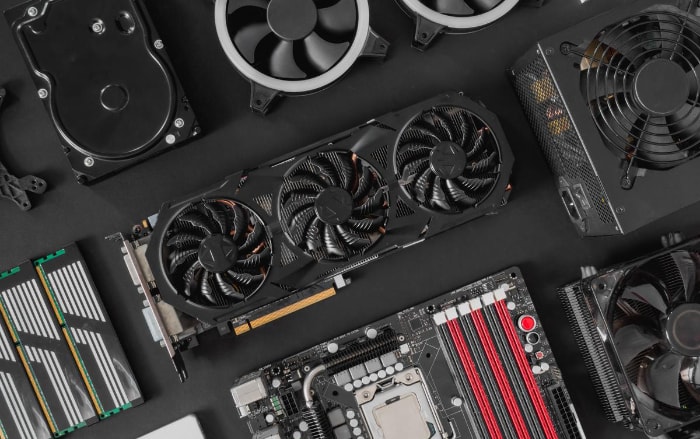GPU Lifespan Explained: Care, Signs, and Replacement

Graphics Processing Units (GPUs) play an essential role in enhancing the visual experience and computational speed of our devices. These powerful components, integral to both gaming rigs and professional workstations, greatly influence the overall performance of a computer.
As with all technology, however, GPUs have a finite lifespan. Understanding the expected lifespan of a GPU, and the factors that can extend or shorten it, is crucial for anyone who relies on their computer for work, entertainment, or both.
Factors Determining GPU Lifespan
The lifespan of Graphics Processing Units (GPUs) hinges on multiple interplaying factors. Being aware of these aspects can guide users in purchasing, maintenance, and usage decisions. Here’s a comprehensive exploration:
Quality and Make of the GPU
Different manufacturers provide GPUs of varying quality standards, making the divide between high-end and budget GPUs especially noticeable. Premium GPUs, often designed with superior materials and engineering, tend to offer more durability.
It’s also beneficial to consider the track record and build quality of established brands, but users should always refer to reviews and firsthand experiences.
Usage Patterns
The nature and frequency of GPU use are critical determinants of its lifespan. Intensive tasks like gaming or professional ventures such as video editing or 3D rendering exert more strain on the GPU compared to basic operations.
Moreover, a GPU consistently run at full capacity can wear out quicker than one used moderately.
Cooling and Ventilation
Maintaining optimal temperature levels is crucial for GPU longevity. A GPU kept within a cool environment is more likely to outlive one subjected to recurrent overheating episodes.
Overheating not only impacts performance but can inflict irreversible damage to internal components.
Overclocking
Pushing the GPU beyond its factory settings, known as overclocking, can offer a performance surge. However, this comes at the cost of producing extra heat and exerting more strain.
If unchecked, these factors can abbreviate the life of the GPU.
Maintenance and Cleaning
The health of a GPU is directly influenced by the care it receives. Regular cleaning prevents dust from obstructing ventilation and raising temperatures.
Accumulated dust is more than just a barrier; it can lead to electrical complications, including potential short-circuit risks.
Average Lifespan of a GPU
The longevity of a GPU remains a topic of curiosity for many. While specific lifespans vary depending on several factors discussed earlier, there are general benchmarks and observations that can provide insights.
Manufacturer’s Warranty
A warranty often serves as a manufacturer’s vote of confidence in their product’s durability. Typically, a GPU might come with a warranty ranging between one to three years, suggesting the minimum time the manufacturer expects the product to last without issues.
However, many GPUs continue to function well beyond this period, with the warranty mainly covering any unexpected manufacturing defects.
Real-World Experiences
While warranties provide some guidance, real-world usage offers clearer insights. From numerous user accounts and community discussions, many GPUs, when maintained properly, can function optimally for 5-8 years.
However, there’s an important distinction to make between ‘functional lifespan’ and ‘performance relevance’. A GPU might still be operational after a decade, but it may not be able to handle contemporary applications or games due to technological advancements and increased demands.
Technological Relevance
A GPU’s relevance in the ever-evolving tech landscape can be as important as its functional lifespan. As software and games advance, they come with increased graphical demands.
A GPU that was top-of-the-line five years ago might struggle with the latest releases, even if it’s still functioning perfectly. This shift doesn’t mean the GPU is at the end of its life, but rather that it might not be suitable for tasks requiring the latest graphical prowess.
Consistent Performance Issues
A clear sign that a GPU is nearing its end is the emergence of persistent performance issues. If games or applications that once ran smoothly start to lag or present visual artifacts, and if these problems can’t be resolved through software updates or minor tweaks, it may indicate that the GPU is wearing out.
Another indicator is the GPU’s temperature. It could be a warning of impending failure if it runs hotter than usual, even under nominal loads and with adequate cooling.
Signs Your GPU is Reaching the End of Its Life

Recognizing when a GPU is approaching the twilight of its functional life can be critical for proactive troubleshooting and planning for a replacement. Here’s a comprehensive look at the symptoms that might indicate your GPU is on its last legs.
Visual Artifacts
One of the most blatant signs of a failing GPU is the appearance of visual artifacts on the screen. These anomalies can manifest as random colors, patterns, lines, or even screen glitches.
These visual disruptions often occur because the GPU struggles to render images properly. A faulty GPU might produce these glitches continuously, or they might appear and vanish intermittently.
Frequent Crashes
If your computer experiences unexplained system reboots, screen freezes, or the dreaded blue screen of death (on Windows systems), it could be linked to a GPU issue. While many factors can cause crashes, a GPU that’s on its way out can be a primary culprit, especially if these crashes occur during graphic-intensive tasks.
Reduced Performance
Over time, users might notice that applications or games which used to run seamlessly now have reduced frame rates, increased load times, or other performance issues. This degradation can be a clear indication that the GPU is not functioning at its optimal capacity.
It’s essential to differentiate between GPU-related performance drops and those caused by other factors, such as software updates or insufficient RAM.
Noise Levels
The sounds emanating from your computer can serve as an audible alert to potential GPU problems. While GPUs can get loud during intensive tasks, any unusual or heightened noises, especially from the GPU’s fan, can be cause for concern.
A fan that’s struggling might indicate it’s not cooling the GPU effectively, or there could be physical damage within the GPU itself.
Temperature Fluctuations
Monitoring the GPU’s temperature is a practical way to gauge its health. If the GPU runs hotter than usual during regular tasks, even with optimal ventilation and cooling, it might be straining beyond its capacity.
Persistent high temperatures, despite taking cooling measures, can point toward a GPU nearing its end.
How to Extend the Lifespan of Your GPU
Ensuring the longevity of your GPU not only saves money but also optimizes the performance of your computer over the years. By taking proactive measures, you can extend the life of your GPU and keep it functioning optimally.
Here are some strategies to consider.
Proper Ventilation
Every GPU needs an environment with good airflow to maintain ideal operating temperatures. When setting up your computer, place it in a location that isn’t confined or prone to heat accumulation.
- Adequate airflow ensures that fresh, cool air is consistently supplied to the GPU, helping dissipate the heat it generates.
- Case fans can be instrumental in directing cool air to essential components, including the GPU, and expelling warm air from the system.
Regular Maintenance
Routine checks and maintenance can prevent minor issues from escalating into major problems.
- Cleaning dust off regularly can ensure that vents and fans remain unobstructed, allowing for efficient cooling. Compressed air can be a handy tool for this task.
- Reapplying thermal paste can improve the heat transfer between the GPU and its heatsink, especially if the existing paste has dried out or degraded.
Monitoring Temperatures
Keeping an eye on your GPU’s temperature can prevent potential overheating and its associated risks.
- Tools and software like MSI Afterburner or HWMonitor can provide real-time temperature readings, helping you identify and address any irregularities before they become problematic.
- Setting temperature benchmarks helps you understand the safe operating range for your GPU. If temperatures frequently surpass these benchmarks, it’s a sign that intervention is needed.
Avoid Unnecessary Overclocking
While overclocking can enhance performance, it’s essential to be cautious and informed.
- Understanding the limits of your GPU ensures you don’t push it to potentially damaging extremes.
- Stability tests, available through various software options, should be conducted after any overclocking to ensure the GPU can handle the increased load without issues.
Software Updates
Keeping your GPU drivers up-to-date can optimize performance and address any known issues or vulnerabilities.
- Regularly check for updates from the GPU manufacturer to ensure your card is running the latest and most compatible drivers.
- Avoid beta drivers unless necessary, as they might not have undergone comprehensive testing and could introduce new issues.
When to Consider Replacing Your GPU

Even with meticulous care, there comes a time when upgrading or replacing a GPU becomes the most logical step. Recognizing the right moment to make the switch can greatly enhance your computing experience and prevent potential performance bottlenecks.
Here are some indicators to help you determine if it’s time to consider a new GPU.
Performance Bottlenecks
As software evolves, its demands on hardware increase. If your once seamless gaming or editing sessions now experience significant lags or reduced graphics quality, your GPU may be struggling to keep up.
- Software upgrades, especially in the realm of gaming or graphic-intensive applications, can demand more from a GPU than older versions.
- Inability to run latest titles at reasonable settings suggests that your GPU might not meet modern demands.
Technological Advancements
With the tech industry advancing at a rapid pace, newer GPUs bring a host of features, efficiencies, and performance improvements.
- Missing out on new features like real-time ray tracing, DLSS, or enhanced VR capabilities might limit the full experience of modern applications.
- Improved energy efficiency in newer GPUs can also lead to cooler and quieter operation, adding value beyond just performance.
Consistent Hardware Issues
If your GPU is displaying persistent signs of wear, such as visual artifacts, unusual noises, or overheating even after maintenance, it may be signaling an imminent failure.
- Frequent crashes or system instability linked to GPU functions can hinder everyday tasks.
- Declining benchmarks compared to past performance levels of the same GPU can be a telltale sign of degradation.
Cost of Repairs vs. Replacement
Sometimes, resolving issues with a GPU might necessitate repairs or part replacements.
- Evaluating the cost-effectiveness of a repair versus purchasing a new GPU can offer clarity. If repair costs approach or exceed a significant portion of a new GPU’s price, replacement might be the wiser financial decision.
- Warranty expiration also plays a role in this decision. A GPU out of warranty might be more expensive to repair, tipping the scale towards replacement.
Futureproofing Needs
Planning for the future ensures that your system remains competent for upcoming tasks and software.
- Anticipating software requirements for the next few years can guide your decision. If your current GPU is barely meeting today’s demands, it’s likely to fall short soon.
- Investing in a higher-end GPU now might provide a more extended period of competent performance, delaying the need for another upgrade in the near future.
Conclusion
Modern computing experiences are deeply intertwined with the capabilities of GPUs. Their critical role in rendering graphics, supporting advanced gaming, and facilitating professional tasks makes them indispensable.
However, with time and continuous evolution in the tech landscape, even the most reliable GPUs face wear and potential obsolescence. Being equipped with knowledge about their average lifespan, signs of deterioration, and best maintenance practices ensures you can derive maximum value and performance.
Ultimately, the balance lies in timely care, understanding when upgrades are necessary, and making informed decisions that align with both present needs and future aspirations.


